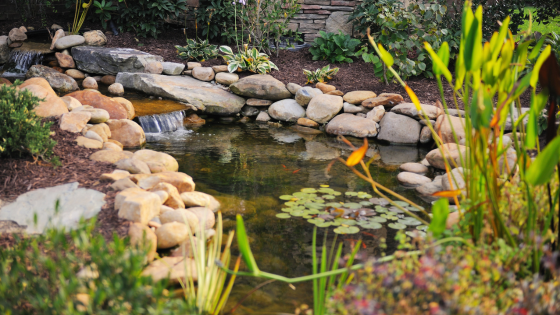
Have you ever thought about adding a water feature to your property? If you’re looking at a house from Great Neck for sale properties, maybe you can envision adding a water feature that could help quiet your mind or enhance the beauty of your landscape.
It’s amazing how many different water features are available today. If you’re concerned about the cost of the water feature or whether or not your property is big enough to accommodate a water feature, be assured that you’re sure to find one that will work for you, your budget, and your property.
Our real estate agents have gathered some comprehensive information on the types of water features that property owners find most appealing. So have a look, and maybe you’ll find just the right installment for your Long Island property.
- Fountain
If your space is limited, a fountain might be one of the best water features you could add. You’ll need to dig a hole beneath the fountain and run an electric cord to an outlet. Installing a fountain kit is one of the easiest ways to get good results.Choose a location for the fountain: either close to the house, where you can enjoy the sound of the water as it burbles into the basin, or further away if you want it in a quieter location. Find a location for the pump that does not disturb the home’s residents. Depending on the kind of fountain you install, you may need to shut it down and winterize it in the cold season.
- Raised Pond
Perhaps you have the space on your property for a raised pond. Ponds work best if they’re not totally shaded but get some sunlight so plants, fish, or other wildlife can prosper. A raised pond can be the central feature around which you plan your garden design. The pond is likely to be attractive for birds, butterflies, and other wildlife on a hot day. Be sure to plan for pond upkeep by controlling algae, fallen leaves, and other debris. - Garden Pools
These features work well where there are hardscapes, like cement walkways or walls. They may lead the visitor away from the house and into the garden plantings. Again, think carefully about where to place the ponds. Think about how the light will reflect on the water and how tree limbs might shade the ponds and prevent sunlight from reaching them. Falling leaves may also be a concern. - Water Bowl
Have a small space? A water bowl might be the answer. These come in many guises: stone bowls, metal dishes, steel dishes, or recycled containers. In fact, you can look for an old planter or discarded garden ornament and see what you can make of it. To get rid of chemicals in the water you use for the water bowl, let it stand for a few days or use collected rainwater. Aquatic plants can help keep the bowl clean. - Wildlife Pond
The ideal location for a wildlife pond is in a quiet corner of the property, where wildlife will feel safe to visit and rest. Also, it should be located in partial shade and sun. Plan on including oxygenating plants or floating aquatic plants in aerated baskets. Soften the edge of the pond with boggy margins. The pond should be dug to different levels with one sloping edge for easy entrance and exit.
Questions about water features, or about buying or selling a house? Contact us today.